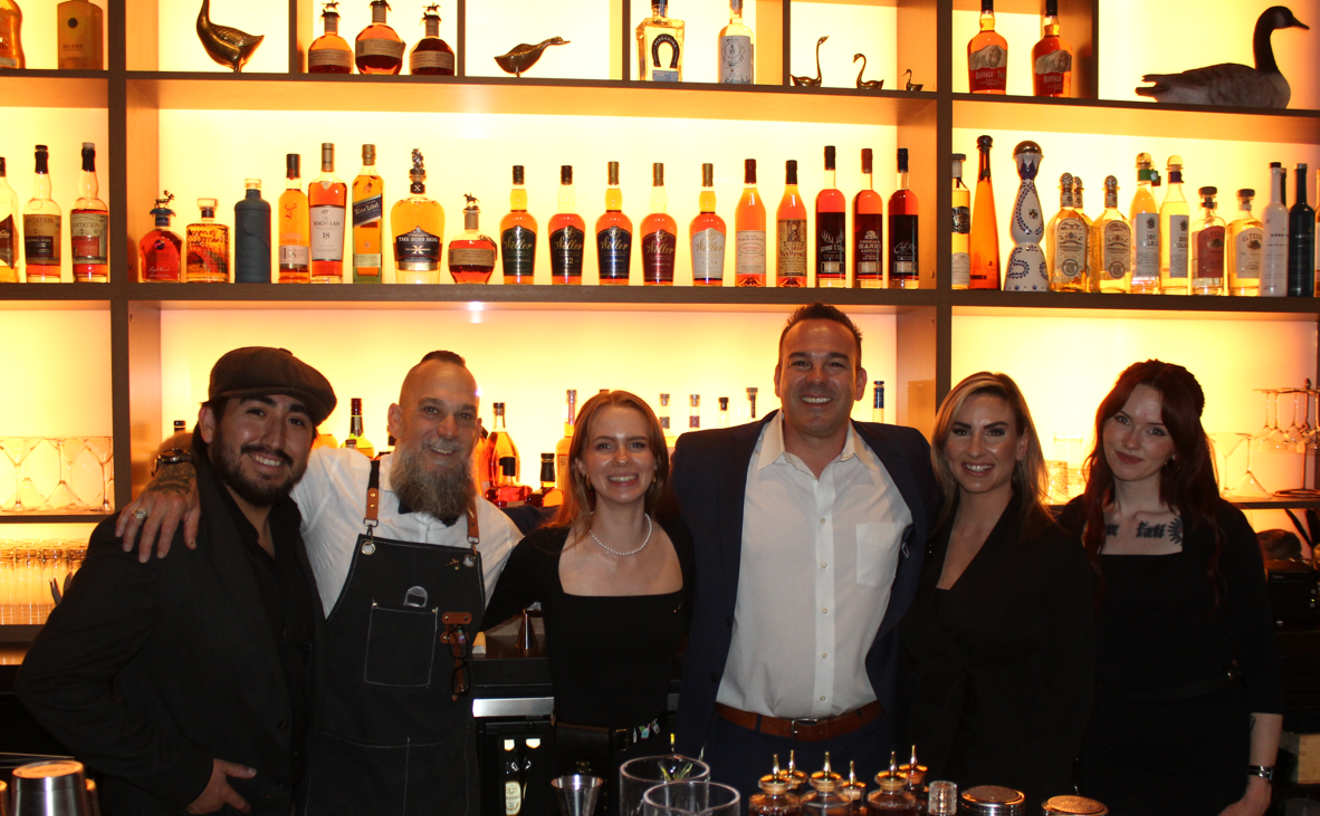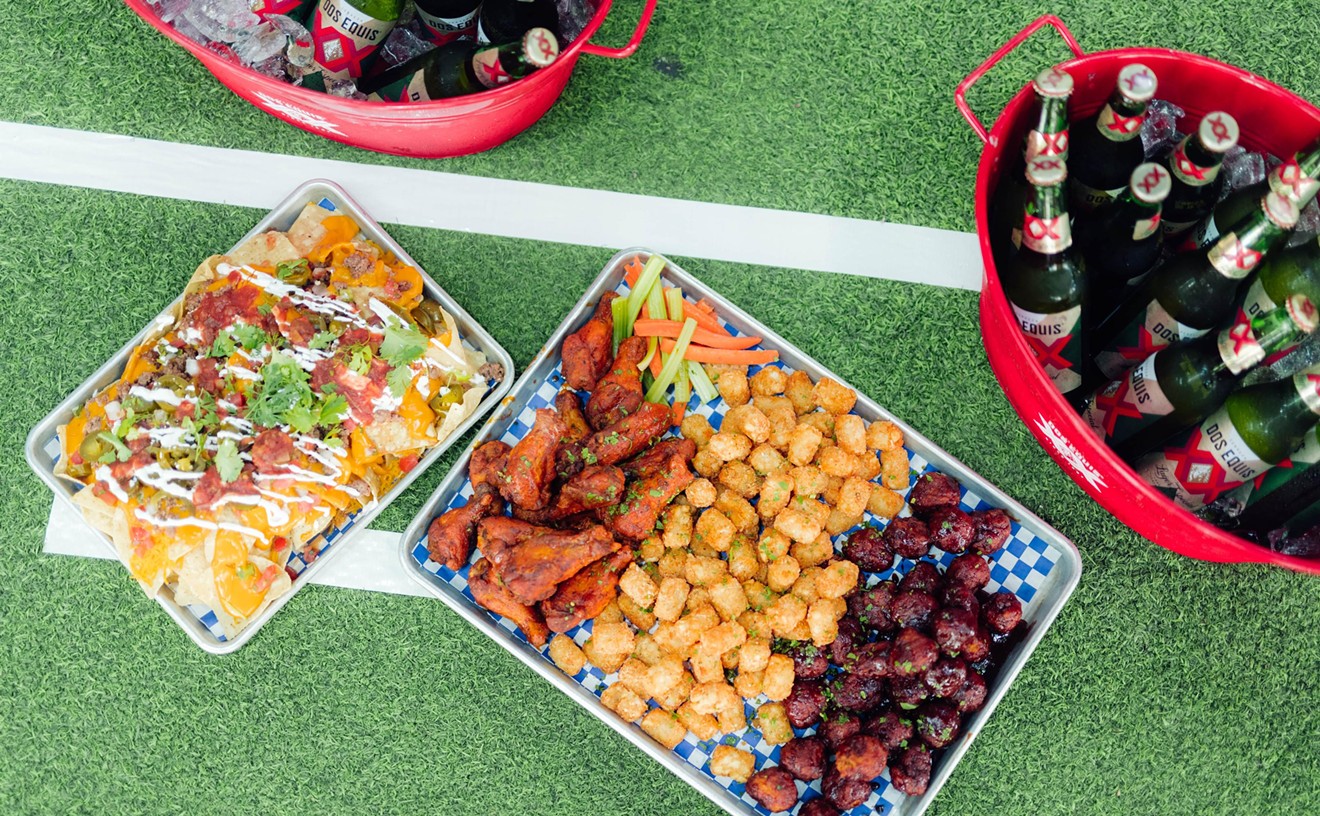Somehow television cooking shows have made an interesting metamorphosis over the past couple of decades. Originally intended as educational tools on public broadcasting stations, the shows have come to rely less on actual cooking and more on providing a type of vicarious entertainment for viewers. These chefs joke and mug at the cameras as much as they cook. And as viewers, we no longer turn on these culinary shows in order to improve our kitchen skills. Will you ever make that recipe for Indian fish curry at home? Probably not.
Instead, we watch because we enjoy the personalities of the hosts. The ones we like we begin to call by first names: Julia, Graham or Martin. And if we don't like them, we can just flip the channel. We don't even care what recipes they might be cooking--we just want to spend a little time with our favorite chefs each week. A recent look at the Saturday lineup on local PBS affiliate KAET provides evidence of this odd transition from pie-in-the-sky haute cuisine to pie-in-the-face kitchen-sink vaudeville.
Just turn to Channel 8 and meet the good, the exuberant and the annoying.
10:30 a.m., Justin Wilson's Louisiana Cookin': Home Grown--When the original show first appeared on PBS in 1982, it quickly became popular. Wilson's disarming regional patois and spicy Cajun ingredients seemed a welcome relief to the more reserved TV chefs of the era. Now with 26 new episodes, he's back from the bayou.
The show follows his well-worn trail into the slow waters of the swamp. The dishes range from alligator tail to sweet potato pie, white beans with liquid smoke to catfish salad. The recipes and ingredients are generally reasonable with a few exceptions ("Honey, pick up some fresh alligator on your way home.").
The ingredient missing in the recipes is the chef. Wilson seems, well, tired. He's told all his stories too many times to too many audiences over too many years. The studio audience tries hard to enjoy his yarns, but the laughter seems forced. The repeating gag about "accidentally" adding too much wine to each dish may have worked in 1982, but now receives a very nervous giggle. Much of the time, the show is just boring. I gar-ron-tee yah.
The only real moments of passion discernible in the man are when he speaks directly to the food he's preparing. "Ooooooooh!" he croons in falsetto. Then his husky voice lowers two octaves and, with all the sensuality of Barry White, Wilson whispers to his heaped casserole dish, "I'm gonna put you in the oven and bake you goooood!" This show needs a serious sprinkling of pepper sauce.
11 a.m., Yan Can Cook: The Best of Asia--Meet the liveliest chef on PBS: Martin Yan. He's silly and often very funny. Sure, maybe his medication needs adjusting, but he's been having one heck of a good time since 1982 when his show first appeared on PBS in San Francisco. His new series explores the varied cuisines of Japan, Singapore, Philippines, Malaysia and his native Hong Kong. In fact, this cooking show is more a fascinating travel documentary than a cooking class.
Sometimes Martin's in a fancy restaurant kitchen with a renowned chef, but more often he's intently explaining what an aging street vendor is searing over a small flame on a street corner. He's terrific leading us through an open-air market in Hong Kong (accompanied by his mother) and explaining the exotic ingredients left and right. Did you know that dried shark fins sell for as much as $1,200 per pound? That snake skins are considered cooking ingredients? That an 80-square-foot kitchen in Hong Kong is considered huge, and one can prepare a feast for 10 in it with a two-burner stove?
Cracking open a fermented thousand-year-old egg, he pulls at the gooey black slime with chopsticks, urging us to try it: "You just might like it." Watching Yan, I not only get hungry, I also want to travel. I want to try new things, maybe even eat a thousand-year-old egg. As Yan is always saying about everything, "Ummm! Oh! Wonderful!" Yes, it is.
1 p.m., Dessert Circus With Jacques Torres--The show opens with jaunty Felliniesque music as Jacques Torres, the renowned pastry chef at Le Cirque 2000, rollerblades across Manhattan to the French Culinary Institute where he is carried inside by an army of cheering white-toqued students. It's a weird entrance that blends images of Pee-wee's Playhouse with Apocalypse Now.
Once inside, Torres proceeds to build complex desserts few would ever consider making at home. What makes Dessert Circus different is its emphasis on audience participation. Torres rarely elaborates ("Add some almond cream."). It's up to the audience to query the chef ("Uh, what's almond cream?"). If people in the audience fall silent, Torres squirts water on them. It's a playful approach, but too often has the awkward silence of an oversize collegiate lecture.
The producers of the show have also added a series of animated cartoon characters that pop up on the screen when things get quiet. Ballerinas dance out of open pots on the stove. Cartoon lions smoke cigars (I wish I were making this up) and crowd the prep area. In case viewers haven't noticed these things, cartoon sound effects (slide whistles, boings and growls) are heard at random intervals.
The concept blends whimsical fantasy with reality, but the end result is annoyance. I spent much of the show studying the faux wall painting behind Torres' stove wondering how it was done.
2 p.m., Baking With Julia--Did you know that in 1942 Julia Child began working for the Office of Strategic Services, the predecessor of the CIA? Learning that, I had this fantasy of the youthful Julia, clad, Emma Peel-like, in black leather, being sent on secret spy missions: "Agent Child. We need a chocolate Bundt birthday cake with a slow-acting poison. . . ."
Her actual work involved looking up people's names on file cards. Who would have imagined that this clerk would eventually publish Mastering the Art of French Cooking in 1961, a work that has sold more than two million copies?
When she began to appear on television in The French Chef, Child was an immediate hit. People began to tape the shows in order to cook along with her in the kitchen. Conveniently, appliance companies began to produce small kitchen-size televisions. Part of Child's charm came from her ability to make complicated recipes readily understandable, and her physical humor provided the laughs. She would furiously pound a piece of meat with a hammer while making droll comments.
Her newest series focuses on baking and features a guest chef each week who proceeds to actually make something while Julia watches. She occasionally asks a question to clarify a procedure, but spends much of the time muttering, "That's lovely," or "That's very clever," in her patented crackling contralto. She might grab a spoon, but the focus here is on the guests, who are always likable and very professional. Some are famous (Martha Stewart), but most are not household names. Watching these people at work, you begin to get a feeling for the physicality of being a baker, the appealing hands-on quality of pounding dough all morning long and the pleasant rewards of opening a hot oven later to see the surprising results of your work. This show makes me want to bake.
Ever wondered why these cooking shows are broadcast on Saturday? Why not Sunday? Or Wednesday evening? My take on it is that Saturday is the day we set aside to take care of chores. Of course, we'd rather be sitting on the couch contemplating whether to watch Pinky and the Brain or take another nap, but our Puritan heritage discourages us from wasting an entire day doing nothing. We would feel guilty if we didn't try, at least, to do something small to better our lives. Now, here's the beautiful part: Watching a cooking show isn't wasting time. No, it's a chance to improve our lot in life. ("I'd like to mow the yard, honey, but Justin Wilson's teaching me how to cook rabbit andouille gumbo. Oooooh!"). That's my Saturday. Educational (sort of). Fun. And guilt-free. Thank you,










